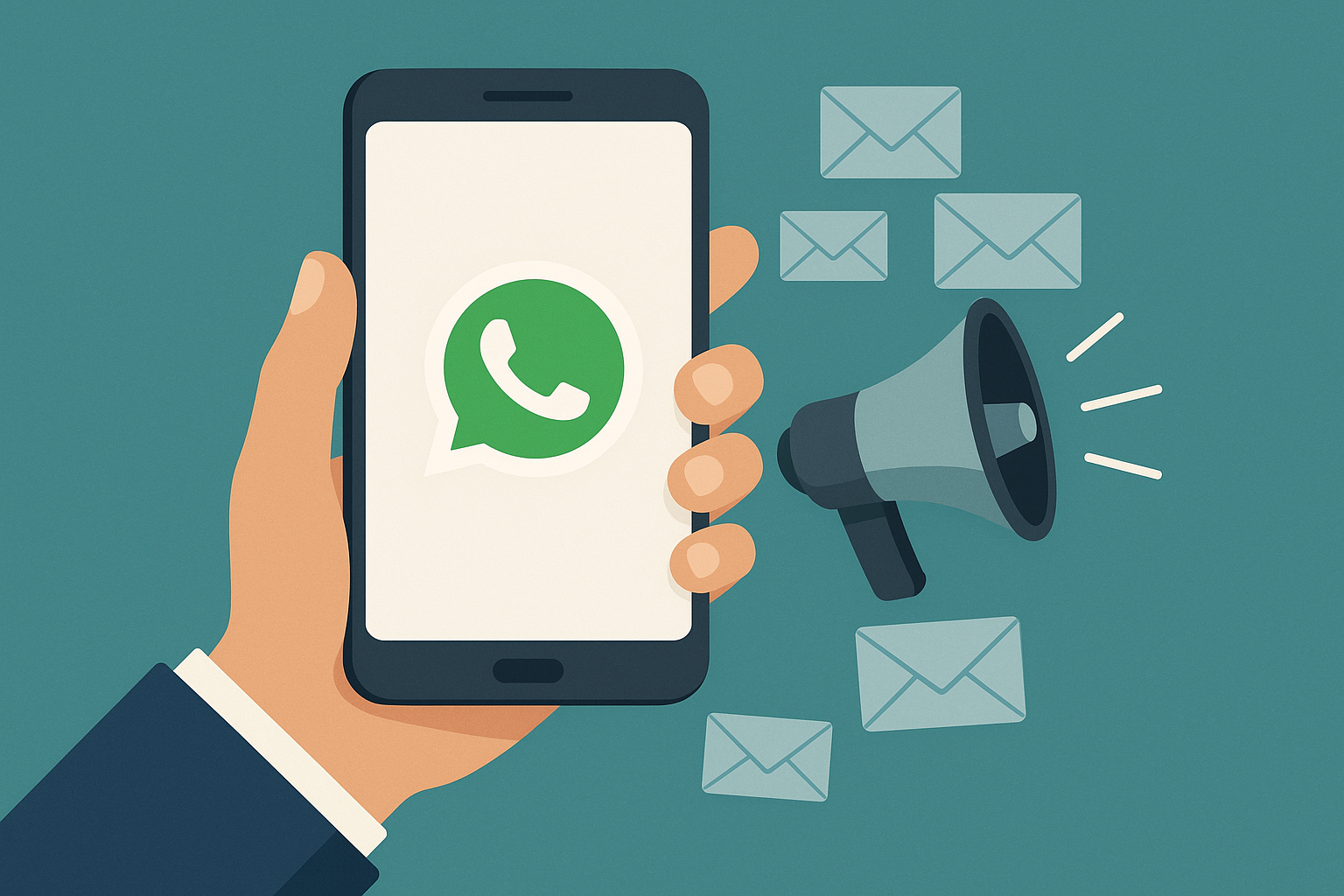L’attuale pandemia globale sta costringendo le aziende a ripensare il modo in cui comunicano con clienti; e dipendenti e escogitare nuovi modi per trasmettere le ultime notizie ai componenti chiave. Alcuni di questi cambiamenti possono essere temporanei; durano fino a quando gli esperti di salute pubblica raccomandano l’allontanamento sociale; ma sospettiamo che la maggioranza rimarrà in vigore come una migliore pratica per le comunicazioni in generale o come metodo di fallback per le comunicazioni di crisi.
Perché la messaggistica mobile durante una crisi?
Nella maggior parte dei casi, le organizzazioni dispongono già di canali di messaggistica; per dipendenti, clienti e potenziali clienti. E a differenza della posta elettronica, la messaggistica mobile è “sempre attiva” e ha molte più probabilità di essere vista / letta dal tuo pubblico.
Tuttavia, non si tratta solo di un messaggio che raggiunge il suo obiettivo, importante quanto lo è durante una crisi. La messaggistica mobile offre anche intelligenza basata sull’intelligenza artificiale; una funzionalità fondamentale per le organizzazioni che necessitano di informare il pubblico su una situazione complessa e in rapido cambiamento. Che si tratti di distribuire chatbot che rispondono a domande specifiche; che il tuo pubblico potrebbe avere o di utilizzare la personalizzazione per trasmettere la messaggistica più rilevante a ciascun individuo del tuo pubblico; l’IA può aiutarti a garantire che uno tsunami di informazioni sia correttamente limitato e indirizzato alle persone che ne hanno più bisogno.
The video also opens up new ways to interact and serve
Oltre alla messaggistica mobile, le aziende stanno sfruttando i video per mantenere la propria base di clienti impegnata e aggiornata con le ultime informazioni. Durante la pandemia di coronavirus, il video è diventato un modo fondamentale per inviare rapidamente i messaggi. E molti incontri, servizi ed eventi di persona vengono sostituiti da video on demand o in diretta;dalle conferenze in diretta alla telemedicina, agli uffici virtuali e all’apprendimento remoto.
Organizations that manage the crisis with SMS / messaging and video
In che modo le organizzazioni, dalle società globali alle organizzazioni governative e persino alle organizzazioni più piccole, utilizzano la messaggistica e i video? Ecco una carrellata di alcuni esempi che abbiamo notato di recente:
Comunicazioni di sanità pubblica
L’Organizzazione mondiale della sanità (OMS) ha recentemente lanciato un chatbot di WhatsApp per diffondere informazioni su COVID19. Il chatbot condivide gli attuali tassi di infezione e le risposte alle domande sul coronavirus. Al momento sono in fase di sviluppo anche chatbot WhatsApp specifici per Paese.
Il vantaggio di utilizzare i chatbot in questo modo è legato alla limitazione delle informazioni. I consumatori hanno una vasta gamma di domande sulla situazione che si sta verificando davanti a loro; da quali sintomi cercare e come trattare il coronavirus a casa, agli impatti aziendali e ai luoghi di test pubblici. Utilizzando un chatbot, i consumatori possono scegliere le aree tematiche a cui sono maggiormente interessati e creare i propri “percorsi” per la raccolta di informazioni.
Virtual healthcare formats
Le visite sanitarie ammissibili si stanno spostando verso un modello di telemedicina per ridurre le interazioni di persona. Utilizzando API sicure e kit di sviluppo software; i provider possono utilizzare video calls to continue to care for patients (and bill for services) while protecting patients, providers and staff from infection.
In addition to video calls in diretta , i provider possono anche registrare e inviare brevi video alla popolazione di pazienti; trasmettendo notizie sul coronavirus e passaggi per salvaguardare la salute.
Health surveillance
Laddove le leggi locali lo consentono, alcune organizzazioni di sanità pubblica stanno monitorando le persone a cui è stato diagnosticato il coronavirus per tenere i residenti locali consapevoli degli scoppi emergenti. In Israele, ad esempio, i vicini di qualsiasi residente a cui è stato diagnosticato il coronavirus sono allertati da un messaggio di testo e sono invitati a rifugiarsi sul posto.1 Altri programmi di sorveglianza che escono da terra sono di natura volontaria, chiedendo ai residenti di auto-denunciare per dare alla gente nella loro regione informazioni più granulari su dove si trovano i casi di coronavirus.
Virtual tools for the workforce
La maggior parte delle aziende globali sono state costrette a mandare a casa almeno una parte della loro forza lavoro e il rapido passaggio dall’ufficio al telelavoro ha spinto molti ad adottare nuovi strumenti e nuovi modi di lavorare. Le tecnologie di videoconferenza e voce sono facili da implementare per i lavoratori remoti (anche se le aziende devono essere vigili sul fatto che gli strumenti che scelgono usano la crittografia per prevenire abusi, una grande preoccupazione per le forze di lavoro rapidamente disperse).
La videoconferenza, un tempo utilizzata da una piccola parte della forza lavoro, è diventata ormai mainstream. Le chiamate di vendita, le lezioni universitarie, i colloqui di lavoro e persino le lezioni di ginnastica ora sono tutti facilmente realizzabili tramite videoconferenza. Si pone la questione se le organizzazioni torneranno completamente alle riunioni di persona, in particolare quelle che richiedono viaggi.
Crisis communications
Gli SMS / messaggi di testo sono un modo eccellente per inviare informazioni in tempo reale. I governi locali e nazionali utilizzano sempre più la messaggistica per avvisare il pubblico di focolai locali, risorse pubbliche e conferenze stampa in diretta. Tieni presente che questi messaggi possono includere foto, video e persino valutazioni online, formati che possono aiutare a fornire informazioni complesse in modo più digeribile.
Cancellation / rescheduling of appointments
La ricerca Sinch mostra che i consumatori erano già aperti a fare di più con i fornitori e le aziende sanitarie (ad esempio le farmacie) tramite la messaggistica: dalla ricezione di notifiche sugli appuntamenti imminenti, la riprogrammazione degli appuntamenti e la ricarica delle prescrizioni. L’attuale crisi della salute pubblica sta accelerando l’adozione di questo tipo di servizi. Ad esempio, molti ospedali stanno annullando gli interventi chirurgici opzionali e altri appuntamenti non urgenti per liberare le strutture per i pazienti critici. Eliminando le cancellazioni di appuntamenti di massa tramite messaggistica (e ottenendo la conferma immediata da parte dei consumatori di aver ricevuto il messaggio), libera gli studi medici dal fare lunghe telefonate.
Per quelle organizzazioni che stanno passando alla comunicazione mobile, la ricerca Sinch mostra che i consumatori preferiscono l’app di messaggistica predefinita sul proprio telefono cellulare rispetto ad altre app di messaggistica (ad esempio WhatsApp) o app sanitarie dedicate. Il 47% preferisce TXT / SMS, rispetto al 31% preferisce le app sanitarie dedicate e il 22% preferisce le app di messaggistica.
Travel updates in real time
L’attuale crisi sta causando il caos nel settore dei viaggi, in cui i voli vengono cancellati in un attimo e i clienti stanno riprogrammando i viaggi pianificati in massa. La messaggistica offre alle compagnie aeree un modo rapido ed efficiente per riprogrammare i voli e trasmettere aggiornamenti critici sui viaggi. Quando un volo viene cancellato, ad esempio, una compagnia aerea invia una notifica mobile: “Il volo 6548 a Parigi è stato cancellato. Il primo volo disponibile per Parigi (CDG) dalla tua posizione parte domani alle 10:00. Possiamo prenotare un posto per te? ” Il viaggiatore risponde “Sì” e lo scambio è completato. (La ricerca di Sinch mostra che la maggior parte dei consumatori ritiene utili le notifiche di viaggio: il 67% ha dichiarato che queste sono “molto utili” e un altro 27% le ha trovate “piuttosto utili”).
Spotlight on good works
Molte aziende stanno trovando il modo di supportare i lavoratori in prima linea più a rischio per COVID-19. I marchi della moda stanno cambiando le linee di produzione per creare maschere, i produttori chimici stanno producendo disinfettante per le mani e dozzine di marchi globali come JetBlue, Starbucks, Hertz e Four Seasons stanno donando beni e servizi agli operatori sanitari. I marchi possono evidenziare questi buoni lavori con brevi video sul campo condivisi tramite social media e app di messaggistica. Prestare particolare attenzione, tuttavia, affinché i video si concentrino sul perché è fondamentale supportare i lavoratori in prima linea (e su come gli altri possono farlo) piuttosto che incoraggiare gli sforzi del marchio.
L’impegno della comunità
La Croce Rossa ha fatto affidamento a lungo sulle comunicazioni SMS e sulla messaggistica basata su app per attivare la sua comunità di donatori di sangue. Durante la crisi attuale, queste comunicazioni sono più importanti che mai. La Croce Rossa sta vivendo gravi carenze perché molte unità di sangue nei luoghi di lavoro e nelle scuole sono state cancellate. Sta usando la sua rete di messaggistica mobile preesistente per sensibilizzare in merito ai luoghi delle donazioni di sangue e per inviare urgenti appelli per donazioni a persone con gruppi sanguigni rari.
Broadcast difficult news
Alcune comunicazioni vengono trasmesse meglio tramite video rispetto al semplice testo. I messaggi di testo possono essere facili da interpretare erroneamente, ma i video trasmettono non solo parole, ma tono, calore e postura, rendendoli molto più appropriati per comunicare notizie sensibili. Le aziende utilizzano brevi comunicazioni basate su video per rimanere in contatto con i dipendenti durante la pandemia e trasmettere informazioni sensibili, come notizie sulle chiusure a breve termine e nuove procedure di sicurezza in atto per proteggere i dipendenti.
Transport / delivery notifications
Molte aziende stanno introducendo nuove politiche e procedure per proteggere i loro conducenti di consegne, il che richiede un’attenta comunicazione ai clienti. Ad esempio, negli Stati Uniti, il colosso della pizza Domino’s ha istituito la “consegna senza contatto” (e in segno di ottimismo dell’azienda per il futuro, sta assumendo 10.000 lavoratori per soddisfare la domanda prevista). Il nuovo sistema prevede che i clienti paghino online (non sono ammessi pagamenti in contanti) e garantisce che le consegne vengano effettuate seguendo le linee guida sul “distanziamento sociale”. I suggerimenti possono anche essere fatti elettronicamente, una caratteristica importante in un momento in cui le persone vogliono riconoscere (e premiare) il lavoro pericoloso dei conducenti di consegna.
Choose a multi-channel approach
Per le aziende che implementano rapidamente nuovi formati di messaggistica o video, la chiave è trovare i consumatori dove e come preferiscono interagire. Mentre alcuni consumatori vorranno ricevere messaggi tramite la loro app telefonica predefinita, altri sono molto più abituati a utilizzare piattaforme di messaggistica dedicate come WhatsApp (e servizi come WhatsApp e Facebook Messenger hanno l’ulteriore vantaggio di includere formati di messaggistica avanzati, che non sono ancora disponibili da alcuni gestori telefonici).
If you need ideas on how messaging is being used by different generations and countries, or ideas on what types of messaging consumers welcome from businesses, check out here the rapporto Mobile Consumer Engagement 2020 .





Achei seu site muito interesting, or app é ótimo